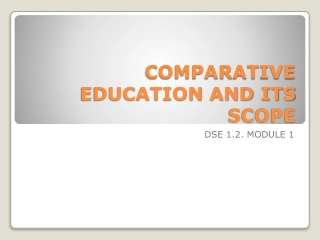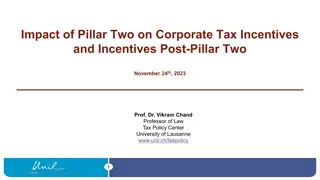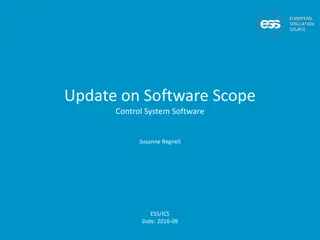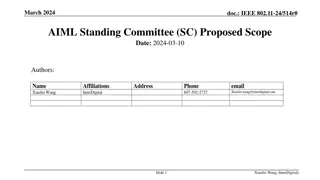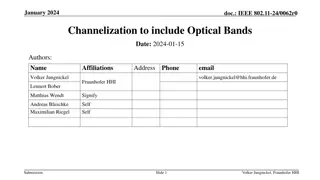
JavaScript Constants and Scope in MIS 2402 Department at Temple University
Explore the concept of JavaScript constants and different scopes in the MIS 2402 Department at Temple University. Learn how to declare variables using let and const, understand global, function-level, and block-level scopes, and discover the importance of defining constants for data control in your code.
Download Presentation

Please find below an Image/Link to download the presentation.
The content on the website is provided AS IS for your information and personal use only. It may not be sold, licensed, or shared on other websites without obtaining consent from the author. If you encounter any issues during the download, it is possible that the publisher has removed the file from their server.
You are allowed to download the files provided on this website for personal or commercial use, subject to the condition that they are used lawfully. All files are the property of their respective owners.
The content on the website is provided AS IS for your information and personal use only. It may not be sold, licensed, or shared on other websites without obtaining consent from the author.
E N D
Presentation Transcript
JavaScript Scope MIS 2402 Department of MIS Fox School of Business Temple University
Agenda What we have already seen (let) New stuff const var Kinds of scope (global, function level, block level) 2
What we have already seen: Declaring a variable with let From the web developer console Try it! 3
New Stuff JavaScript gives us two other ways to put a piece of data into the computer s memory. JavaScript allows us to define a constant using const Try this! 4
Heres what makes const different Once you declare a variable using const you are prevented from changing its value. You are also prevented from changing it Try it! 5
More about const You are also prevented from declaring it again! The only way to change the value stored in const is to refresh the whole page. Try it! 6
More about const Typically, we define a constant to control some piece of data in our code that does not change often but is referenced in many places. Suppose you have an estimated rate of growth for an investment. The estimate only changes once a year, and it is used in several functions. Also, you don t want to allow a user to edit that value! See futurevalue.zip 7
Take note In our example here, estimated_rate is declared outside of all the functions. It is then used inside all the functions that are below it. Some important remarks follow 8
Global scope In the prior slide, the constant estimated_rate, was declared outside all the functions. A constant or a variable declared in that position is said to have global scope. That is, it is available everywhere in the code. Be advised that: 1. 2. There s no rule that says constants must be defined at the global level. However declaring a constant at the global level usually makes sense. Constants represent important facts, that don t change often. Consequently you probably want to use such an important piece of data globally! There s no rule that says that declarations at the global level must be constants. (You can declare global variables with var or let.) However declaring a variable at the global level is usually bad. It is much better to pass data into and out of functions using parameters and return. (Just like we ve been doing all semester long!) 3. 4. 9
Take note You may have also noticed that we are using both var and let in the example. At first glance you might think that var is just another way to declare a variable. That s true! But there is an important difference between var and let. 10
Try this Add a console.log(i) to line 53 in the futureValue function. Run the code and see what happens 11
Now try this Change line 50 to use let instead of var. Run the code and see what happens 12
Why did let fail? The reason let failed was because let defines variables with block level scope. The block is defined by the opening and closing curly braces { }. The variable i exists inside that block (including any more blocks that might be nested inside it.) Therefore the variable i does not exist outside the block on line 53! 13
Why did var work? The reason var worked was because var defines variables with function level scope. Any variable defined with var exists everywhere inside the current function. From line 49 onward sum is defined From line 50 onward i is defined 14
Preferences Even though using let might seem a little more restrictive, it really is preferred. The let and const options first became a standard part of the JavaScript language 2015 and it has taken years for them to be fully embraced. This course uses let for most variable declarations. This is in keeping with the second edition of your textbook, but not the first edition! In most situations, let can be used in place of var without consequence. This is especially true if you develop the habit of declaring the variables you need at the beginning of a function and avoid declaring variables haphazardly in the middle of your code! 15
Time for some practice On your own outside of class and not for a grade solve this problem using JavaScript. By listing the first six prime numbers: 2, 3, 5, 7, 11, and 13, we can see that the 6th prime is 13. What is the 10,001st prime number? THIS IS JUST PRACTICE (YOU DON T NECESSARILY NEED TO USE THIS SCOPE MATERIAL TO SOLVE THIS PROBLEM) 16


